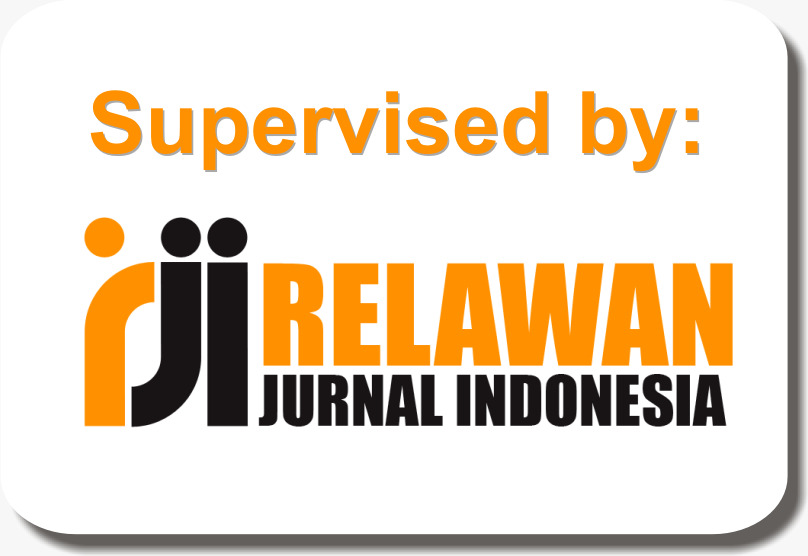Analisis Penerimaan Pengguna Kartu Top-Up di Summarecon Mall Bekasi Menggunakan Technology Acceptance Model (TAM)
Abstract
In the digital era, electronic payment systems are increasingly developing, including the use of top-up cards in shopping centers. However, the level of acceptance and effectiveness of top-up cards in increasing transaction efficiency is still a question. This study aims to analyze the factors that influence the acceptance of the top-up card payment system at Summarecon Mall Bekasi using the Technology Acceptance Model (TAM). The research method used is quantitative by distributing questionnaires to 80 respondents who are top-up card users. Data analysis was carried out through validity and reliability tests, multiple linear regression, and hypothesis testing to test the effect of Perceived Usefulness, Perceived Ease of Use, Attitude Toward Using, and Behavioral Intention on the acceptance of top-up cards. The results showed that Perceived Usefulness had the most significant effect on the acceptance of top-up cards, followed by Behavioral Intention, while Perceived Ease of Use and Attitude Toward Using also contributed but with a smaller effect. The regression model showed that 78% of the variation in top-up card acceptance could be explained by the variables in the TAM. The conclusion of this study confirms that increasing the use of top-up cards can be done by increasing the benefits felt by users, simplifying the top-up system, and increasing socialization and education to users. The results of this study provide insights for mall managers and payment service providers in increasing transaction efficiency and encouraging the adoption of digital payment systems in modern retail environments.
Keywords
Full Text:
PDFReferences
Anastasia, F. D., & Paputungan, I. V. (2022). Implementasi Bloc Pattern Pada Pengembangan Frontend Fitur Top Up Linkaja Aplikasi M-Banking Agen46 Dengan Teknologi Flutter (Studi Kasus : Pt. Bank Negara Indonesia Tbk). Jurnal Sains, Nalar, Dan Aplikasi Teknologi Informasi, 2(1), 1–11. https://doi.org/10.20885/snati.v2i1.14
Ginting, F., Buulolo, E., & Siagian, E. R. (2019). Implementasi Algoritma Regresi Linear Sederhana Dalam Memprediksi Besaran Pendapatan Daerah (Studi Kasus: Dinas Pendapatan Kab. Deli Serdang). KOMIK (Konferensi Nasional Teknologi Informasi Dan Komputer), 3(1), 274–279. https://doi.org/10.30865/komik.v3i1.1602
Hanafiah, A. S., & Ahmaddien, I. (2020). PENGANTAR STATISTIKA.
Hartatik, S. R., & Budihartanti, C. (2020). Analisis Kepuasan Pengguna Terhadap Penerapan Aplikasi Go-jek Dengan Menggunakan Metode TAM. PROSISKO: Jurnal Pengembangan Riset Dan Observasi Sistem Komputer, 7(1). https://doi.org/10.30656/prosisko.v7i1.1653
Husnul, N. R. I., Prasetya, E. R., Sadewa, P., Jimat, & Purnomo, L. I. (2020). Statistik, deskriptive (Issue 1). UNPAM Press.
Janna, N. M., & Herianto. (2021). KONSEP UJI VALIDITAS DAN RELIABILITAS DENGAN MENGGUNAKAN SPSS. Jurnal Darul Dakwah Wal-Irsyad (DDI), 18210047, 1–12.
Martias, L. D. (2021). Statistika Deskriptif Sebagai Kumpulan Informasi. Fihris: Jurnal Ilmu Perpustakaan Dan Informasi, 16(1), 40. https://doi.org/10.14421/fhrs.2021.161.40-59
Matulessy, E. R., & Tambunan, A. U. (2023). Analisis Regresi PLS Sebagai Alternatif Dari Regresi Linear Berganda: Studi Kasus Pengaruh Luas Lahan dan Luas Panen Terhadap Produksi Padi di Kabupaten Manokwari. Jurnal Pendidikan Dan Konseling (JPDK), 5(1), 3358–3361.
Muhartini, A. A., Sahroni, O., Rahmawati, S. D., Febrianti, T., & Mahuda, I. (2021). ANALISIS PERAMALAN JUMLAH PENERIMAAN MAHASISWA BARU DENGAN MENGGUNAKAN METODE REGRESI LINEAR SEDERHANA. Jurnal Bayesian : Jurnal Ilmiah Statistika Dan Ekonometrika, 1(1), 17–23. https://doi.org/https://doi.org/10.46306/bay.v1i1.2
Puspita Ningrum, E. (2022). Keefektifan Manfaat, Kemudahan Penggunaan, Dan Keamanan Pada Minat Menggunakan E-Money Dalam Meminimalisir Penyebaran Covid-19 Pada Masyarakat Di Masa Pandemi. Jurnal Sosial Ekonomi Dan Humaniora, 8(1), 42–47. https://doi.org/10.29303/jseh.v8i1.4
Rizky Fadilla, A., & Ayu Wulandari, P. (2023). Literature Review Analisis Data Kualitatif: Tahap PengumpulanData. Mitita Jurnal Penelitian, 1(No 3), 34–46.
Setiawan, J., Saloom, G., Damanik, D., & Banne, S. (2022). Metodologi Penelitian Kuantitatif, Kualitatif, dan Kombinasi (N. A. Munandar (ed.)). Media Sains Indonesia.
Triyanto, E., Sismoro, H., & Laksito, A. D. (2019). Implementasi Algoritma Regresi Linear Berganda Untuk Memprediksi Produksi Padi Di Kabupaten Bantul. Rabit : Jurnal Teknologi Dan Sistem Informasi Univrab, 4(2), 66–75. https://doi.org/10.36341/rabit.v4i2.666
Tussaadah, R. Z., Hendriana, H., & Yuliani, W. (2021). Validitas Dan Reliabilitas Angket Penyesuaian Diri Peserta Didik Sma. FOKUS (Kajian Bimbingan & Konseling Dalam Pendidikan), 4(3), 213. https://doi.org/10.22460/fokus.v4i3.7250
DOI: http://dx.doi.org/10.30646/sinus.v23i2.917
Refbacks
- There are currently no refbacks.
STMIK Sinar Nusantara
KH Samanhudi 84 - 86 Street, Laweyan Surakarta, Central Java, Indonesia
Postal Code: 57142, Phone & Fax: +62 271 716 500
Email: ejurnal @ sinus.ac.id | https://p3m.sinus.ac.id/jurnal/e-jurnal_SINUS/
ISSN: 1693-1173 (print) | 2548-4028 (online)

This work is licensed under a Creative Commons Attribution-NonCommercial-ShareAlike 4.0 International License.















